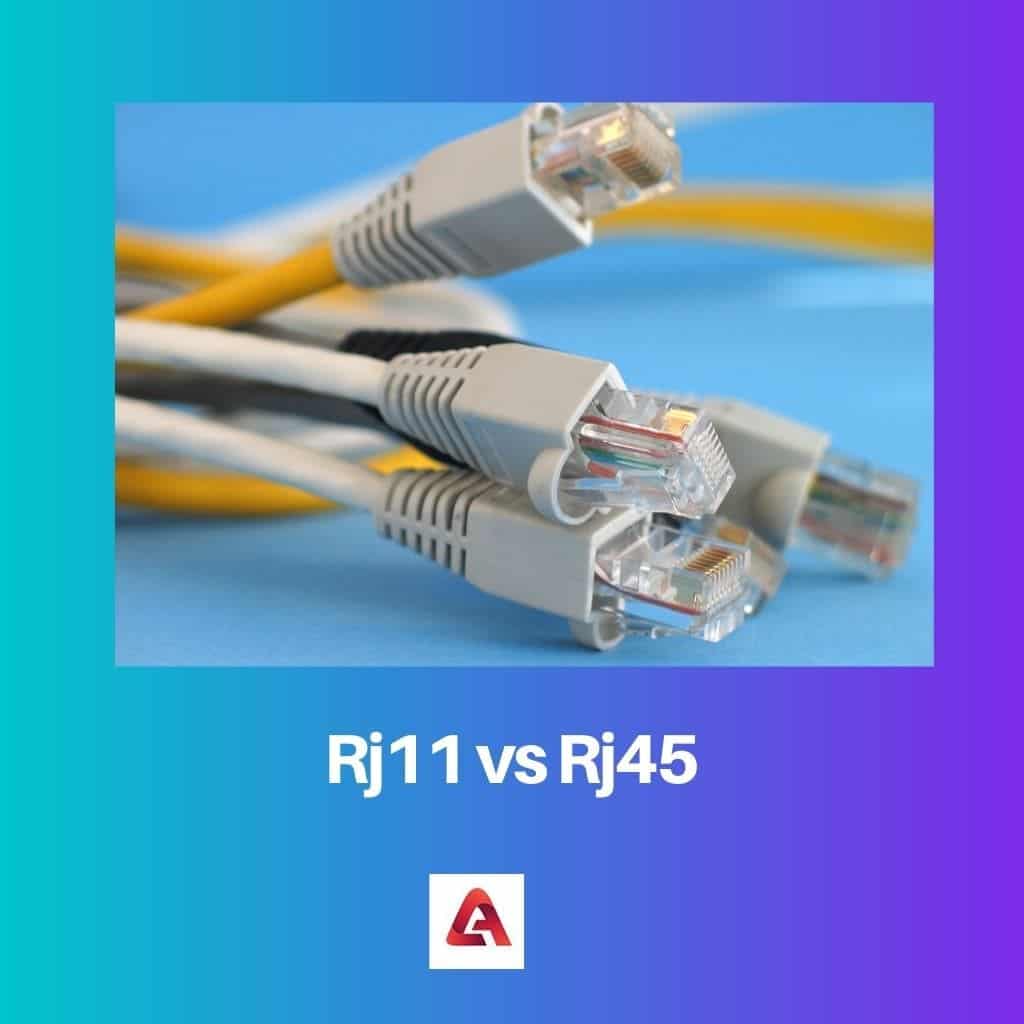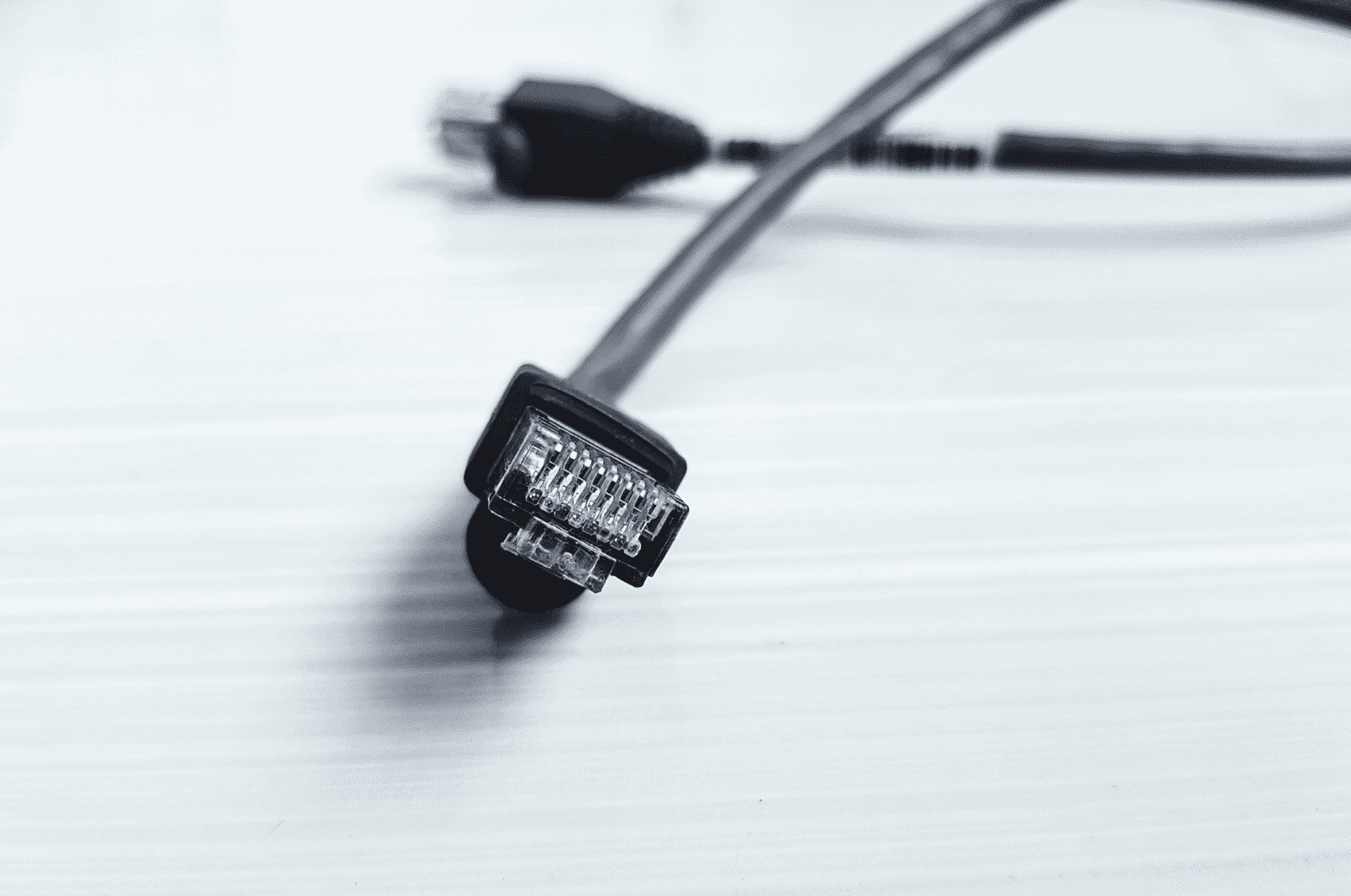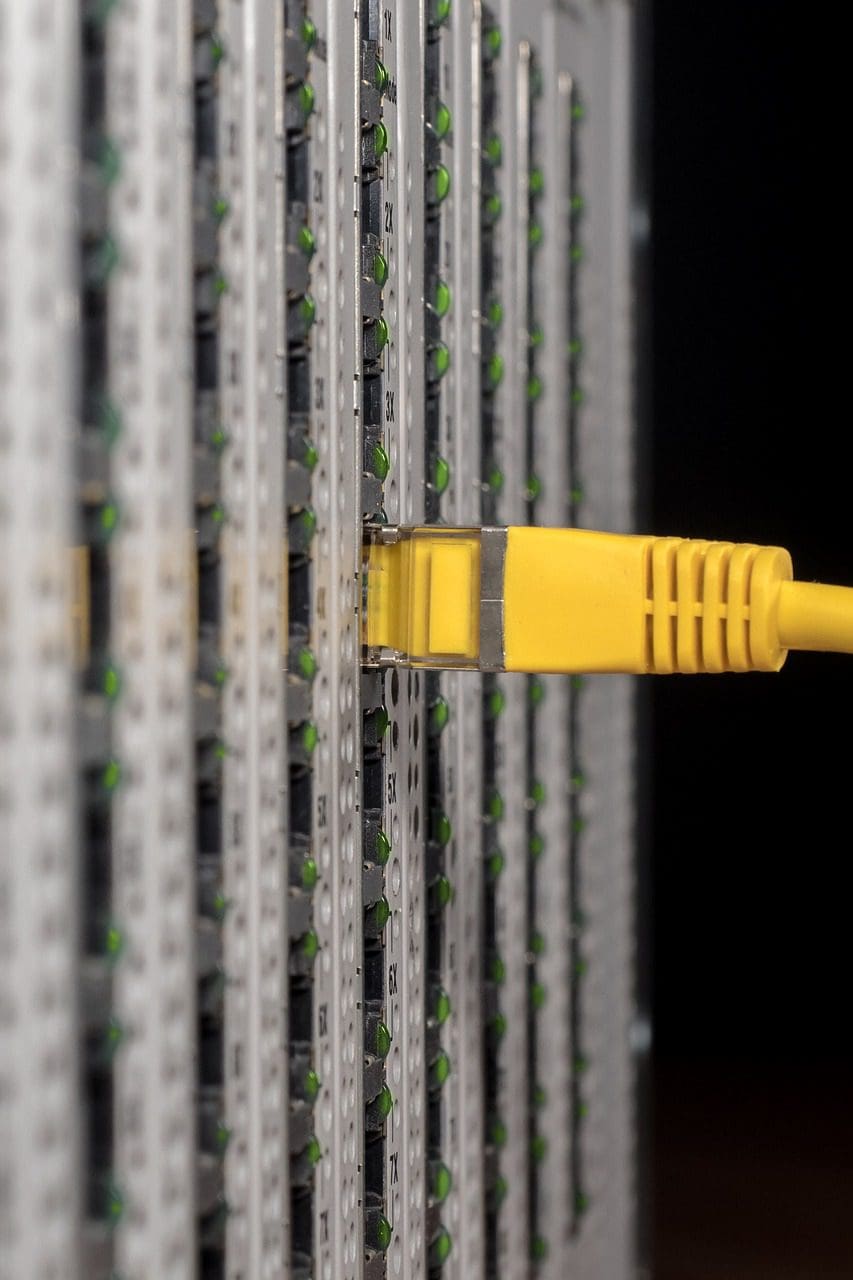A registered jack is a standardized network interface used as an interface in telecommunication networks to a local exchange carrier service or a long-distance service carrier.
The commonly registered jack cables used with UTP cables are Rj11 and Rj45.
These registered jacks establish connections for telecommunication lines.
The registered jacks originated in the 1970s with the introduction of the Universal Service Ordering Code (USOC) scheme of the Bell System.
Key Takeaways
- RJ11 and RJ45 are types of connectors used in telecommunications for connecting devices to a network.
- RJ11 is a 2 or 4-wire connector used for telephone lines, while RJ45 is an 8-wire connector used for Ethernet connections.
- The major difference between the two is the number of wires and the purpose of use, with RJ11 for telephones and RJ45 for Ethernet connections.
Rj11 vs Rj45
RJ11 is a small, square-shaped plastic telephone interface with a 6P2C and 6P4C configuration. It is used as an adapter for the internet, telephones and modems. RJ45 is large and bulky and used in Ethernet networks that have a configuration of 8P8C. It can support 10 GBPS speed over Ethernet networks.

Rj11 is the most commonly used registered jack in the field of telecommunications. This telephone interface is made up of twisted pair of wires in addition to a modular jack. It is made up of unshielded twisted pairs (UTP). The most common and popular function of Rj11 is to plug in the telephone. It is designed to hold six wires for a maximum of three telecommunication lines.
Rj45 is widely used in ethernet connections and networks. It consists of eight wires or slots that are in different colours. Registered Jack-45 or RJ-45 is most commonly used in industry today for high-speed networks’ wiring and connections.
The RJ-45 connector is also commonly used in flood-wired environments. These cables are wired in different ways or versions, T-568A and T-568B. Initially, these were used as connectors in telephone networks and later implemented in high-speed applications. It is made up of unshielded twisted pairs (UTP). These are also known as data jacks.
Comparison Table
| Parameters of comparison | Rj11 | Rj45 |
|---|---|---|
| Connectors | The most widely used registered jack consists of four slots or connectors and six positions. | It consists of eight slots or connectors with eight equal positions. |
| Bandwidth | It supports a bandwidth of around 24 Mbps. | RJ45 supports up to 10Gbps speed over Ethernet applications. |
| Size | It is smaller in size than Rj45. Due to its square-shaped nature, it is compact. | Compared with Rj11, it is bigger and much wider with more slots. Its rectangular-shaped nature makes it larger and bulkier. |
Applications | It is used in telecommunication and telephone applications to connect to the internet through modems. | It is widely used with ethernet applications and networks. It is used in LAN and ADSL applications. It also finds its use in automation industries. |
| Compatibility with the other model | Rj45 cannot be inserted in the Rj11s port. | Rj11 cannot be inserted into Rj45’s port. |
What is Rj11?
Rj11 is the most commonly used registered jack in the field of telecommunications.
The most widely used registered jack consists of four slots or connectors and six-position.
It is designed to hold six wires for a maximum of three telecommunication lines. This telephone interface is made up of twisted pair of wires in addition to a modular jack.
The most common and popular function of Rj11 is to plug in the telephone. Rj45 cannot be inserted in the Rj11s port. It is made up of unshielded twisted pairs (UTP).
It supports a bandwidth of around 24 Mbps. It is smaller in size than Rj45.
Due to its square-shaped nature, it is compact. It is used in telecommunication and telephone applications to connect to the internet through modems.

What is Rj45?
Rj45 is widely used in ethernet connections and networks. It consists of eight wires or slots that are in different colours. They are also known as data jacks.
The Rj45 comprises eight slots or connectors having eight equal positions.
The rectangular shape makes it more enormous and bulky. These cables tend to be wired in different ways or versions, T-568A and T-568B.
Initially, these were used as connectors in telephone networks and later implemented in high-speed applications.Rj11 cannot be inserted into Rj45’s port. It is made up of unshielded twisted pairs (UTP).
It is used in LAN and ADSL applications. RJ45 supports up to 10Gbps speed over Ethernet applications.
Compared with Rj11, it is bigger and much broader with more slots. It also finds its use in automation industries.

Main Differences Between Rj11 and Rj45
- The most widely used registered jack comprises four slots or connectors and six positions. It consists of eight slots or connectors with eight equal positions.
- It supports a bandwidth of around 24 Mbps.RJ45 supports up to 10Gbps speed over Ethernet applications.
- It is smaller in size than Rj45. Due to its square-shaped nature, it is compact. Compared with Rj11, it is bigger and much wider with more slots. Its rectangular-shaped nature makes it larger and bulkier.
- It is used in telecommunication and telephone applications to connect to the internet through modems. It is widely used with ethernet applications and networks. It is used in LAN and ADSL applications. It also finds its use in automation industries.
- Rj45 cannot be inserted in the Rj11s port. In contrast, Rj11 cannot be inserted into Rj45’s port.


The article aptly discerns the attributes and applications of RJ11 and RJ45 connectors, providing essential knowledge for individuals involved in telecommunications and networking.
Kirsten Thomas, indeed. The article’s lucid description and comprehensive comparison of RJ11 and RJ45 cables greatly contribute to the understanding of these telecommunication interfaces.
The article provides a thorough explanation of RJ11 and RJ45 connectors. The detailed comparison and clear descriptions enhance understanding and comprehension of these crucial network interfaces.
Hrose, I completely agree. The article effectively elucidates the technical differences and functions of RJ11 and RJ45 connectors, making it an excellent educational resource.
The article effectively breaks down the components and functionalities of RJ11 and RJ45 connectors, serving as a reliable educational medium for understanding these telecommunications interfaces.
The article’s comprehensive and structured approach to explaining RJ11 and RJ45 connectors is commendable. It assists in building a strong foundational understanding of these network interfaces.
The article rigorously expounds upon the unique characteristics and functions of RJ11 and RJ45 connectors, presenting an authoritative piece for individuals engaged in telecommunications and networking.
Ellis Daniel, I couldn’t have said it better. The article comprehensively examines RJ11 and RJ45 connectors, offering a profound understanding of these critical network interfaces.
The article intelligibly explains the differences and applications of RJ11 and RJ45 connectors, making it an indispensable source for individuals seeking to enhance their knowledge of network interfaces and telecommunication systems.
Jason21, I concur. The article’s detailed technical specifications and comparative analysis provide clear insights into RJ11 and RJ45 connectors, making it an invaluable reference material.
This article provides in-depth knowledge about the RJ11 and RJ45 connectors, serving as an essential learning resource for professionals and learners alike.
The detailed insights into the connectors’ design and applications are truly enlightening. It’s an excellent read for understanding the differences.
The article is quite comprehensive in explaining the technical and practical aspects of RJ11 and RJ45 connectors. Kudos to the author for such an informative piece!
This article offers valuable insights into the distinct features and purposes of RJ11 and RJ45 connectors. It fosters a deeper understanding of these network interfaces.
This article is an excellent guide on the connectors used in telecommunications. It provides a clear distinction between RJ11 and RJ45 connectors, offering a valuable comparison to understand their key differences.
The thorough comparison table makes it easier to comprehend the specifics of RJ11 and RJ45 connectors. Great article!
Sjones, I totally agree. The detailed explanation of the technical aspects of these connectors is very informative and helpful.
The article’s explicit analysis of RJ11 and RJ45 connectors markedly broadens the perspective and awareness of these essential network interfaces, making it an invaluable resource for readers.
Julie, I completely share your viewpoint. The article’s detailed elucidation of RJ11 and RJ45 connectors amplifies the understanding and grasp of these fundamental network elements.
The comprehensive discussion of RJ11 and RJ45 connectors in the article is highly valuable. It clarifies the key disparities and functionalities of these connectors, making it a noteworthy piece for the intended audience.
David, I couldn’t agree more. The article is rich in content, elucidating the intricate aspects of RJ11 and RJ45 connectors. It presents a thorough analysis of these fundamental network interfaces.